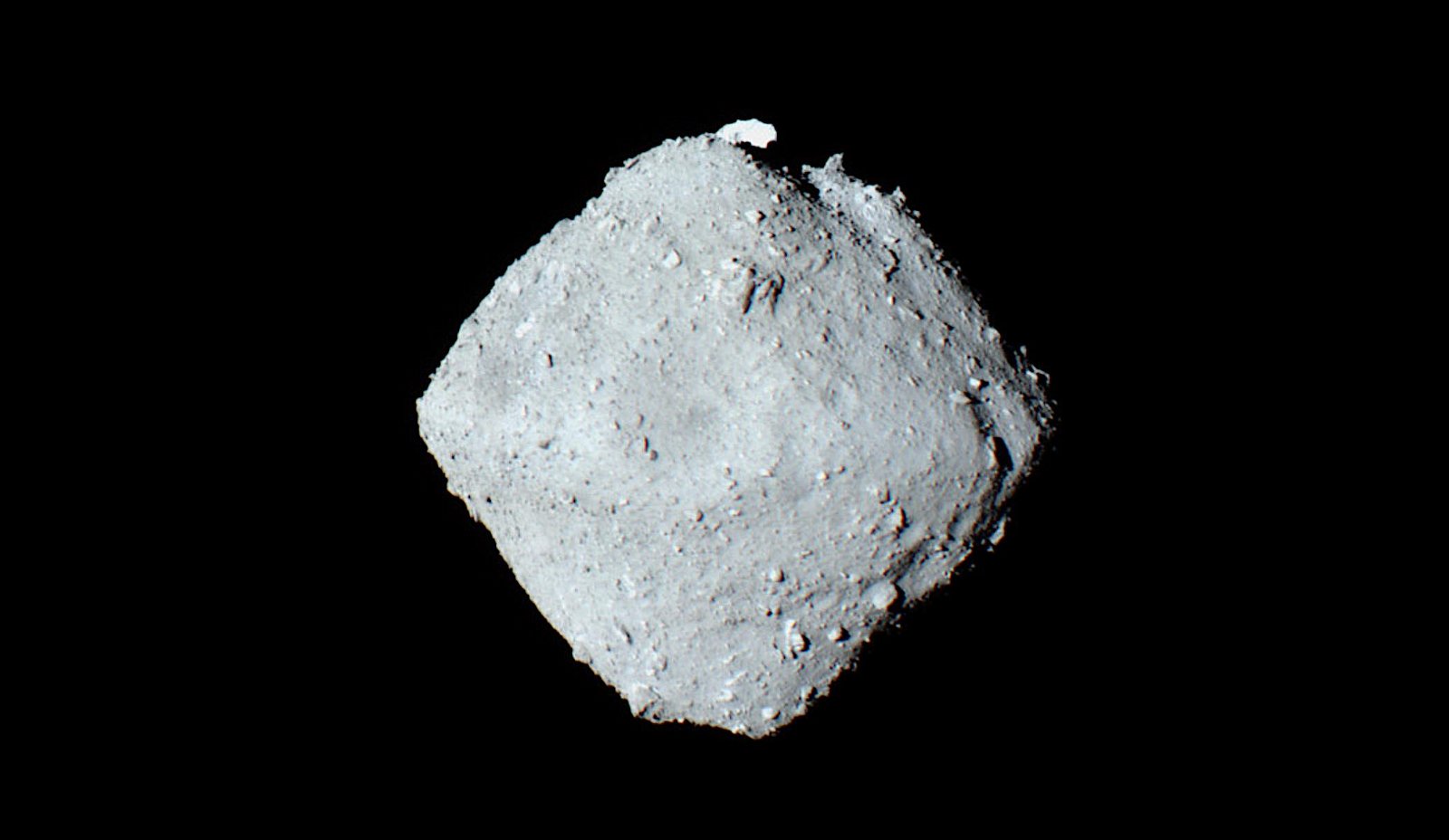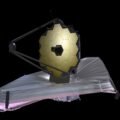

Welcome to this week’s installment of The Intelligence Brief… as NASA and an international team recently announced the results of their recent analysis of samples collected from a distant asteroid, this week we’ll be looking at 1) what turned up in samples delivered to Earth by a Japanese spacecraft, 2) how this might suggest an off-planet origin for the building blocks of life, and 3) how future analysis of asteroid samples could reveal more about the mysterious origins of life on Earth.
Sign up here to have The Intelligence Brief newsletter sent to your inbox each week.
Quote of the Week
“The cosmos is within us. We are made of star-stuff. We are a way for the universe to know itself.”
― Carl Sagan
Latest Stories: Before getting into our analysis this week, stories we’re covering right now include analysis of how incidents involving several objects downed over North America have renewed debate over excessive secrecy regarding what the U.S. government knows about unidentified flying objects. In similar reporting, Tim McMillan tells us why the Pentagon says it has no plans to release images of a series of unidentified objects recently shot down over the U.S. and Canada. You can find links to all our recent stories at the end of this week’s newsletter.
Podcasts: This week in podcasts from The Debrief, hosts MJ Banias and Stephanie Gerk tell us all about robot dogs and oblong space object detections in the latest installment of The Debrief Weekly Report. Meanwhile, on The Micah Hanks Program this week, I’m joined by my cofounder Tim McMillan for a discussion of excessive secrecy in government, along with statements about classification by Director of National Intelligence Avril Haines. You can subscribe to all of The Debrief’s podcasts, including audio editions of Rebelliously Curious, by heading over to our Podcasts Page.
Video News: Be sure to catch Chrissy Newton’s recent chat with scientist Carmel Majidi on Rebelliously Curious, who explains how a shapeshifting metal robot he created can escape from jail, just like a scene out of Terminator 2: Judgement Day. You can also watch past episodes and other great content from The Debrief on our official YouTube Channel.
And with that, it’s time to shift our focus over to what recently turned up in the analysis of asteroid samples conducted by an international team and why it could help us understand the origins of life on Earth.
NASA Team Completes Its Asteroid Sample Analysis
A NASA analysis of samples returned to Earth from the surface of an asteroid by a Japanese spacecraft has revealed the presence of rich organic molecules, lending weight to theories involving the chemical precursors to life on Earth originating in space.
According to an analysis by the American space agency and its international partners, initial samples retrieved from asteroid Ryugu by the Japanese Hayabusa2 spacecraft found an abundance of organic molecules, suggesting that the components necessary for life could have been introduced in Earth’s distant past from such celestial sources.


Such concepts have their origins as far back as the 5th century BCE when Greek scholar Anaxagoras proposed a philosophical precursor to the modern idea that objects in space like asteroids and comets could potentially be carrying the seeds of life.
Consisting primarily of oxygen, nitrogen, hydrogen, and sulfur or other atoms combined with carbon, organic molecules can be produced from a variety of chemical reactions, not all of which involve life. This fact has intrigued proponents of off-planet origins for these building blocks of life, since almost every living organism on our planet owes its origins to combinations of these molecules.
Extraterrestrial Origins of Life on Earth?
Of key significance in the recent analysis was the detection of several amino acids used by organisms on Earth to build proteins, along with organic substances like aliphatic amines, polycyclic aromatic hydrocarbons, carboxylic acids, and heterocyclic compounds rich in nitrogen that all form in the presence of another component that is vital to the formation of life: liquid water.


These prebiotic molecules, meaning they are the chemical precursors of life, and their discovery in samples collected on the surface of Ryugu, is significant because it reveals that such key ingredients to life could be shielded against the extreme conditions that occur in space, allowing them to transit great distances and potentially make their way to planets like Earth, where the processes that lead to the formation of life can take place.
“These molecules can be transported throughout the solar system, potentially dispersing as interplanetary dust particles after being ejected from the uppermost layer of the asteroid by impacts or other causes,” said Hiroshi Naraoka of Kyushu University, Fukuoka, Japan in a statement.
Building Blocks of Life
According to the international team, who have recently published a paper on their findings, the compounds detected in the samples harvested from asteroid Ryugu appear to be consistent with what has already been found in meteorites that have been exposed to water where it is suspected of existing in space.
Although the presence of organics in the Ryugu samples is promising, the presence of other components vital to the formation of life, such as sugars and nucleobases required in the formation of RNA and DNA, have not been detected yet in the current samples.
“It is possible these compounds are present in asteroid Ryugu,” said Daniel Glavin of NASA Goddard Space Flight Center in a statement, noting that the compounds in question “are below our analytical detection limits given the relatively small sample mass available for study.”


Going forward, additional samples will be studied in the years ahead, which will include comparisons between samples from asteroid Ryugu and another asteroid, Bennu, once samples from it are returned to Earth later this year by NASA’s OSIRIS-Rex mission.
With the volume of the sample collection expected from Bennu, NASA and its international partners also believe it could provide even better opportunities to search for evidence of components that may help shed further light on the organic composition of asteroids, as well as the role they might have played in the mysterious origins of life on Earth.
That concludes this week’s installment of The Intelligence Brief. You can read past editions of The Intelligence Brief at our website, or if you found this installment online, don’t forget to subscribe and get future email editions from us here. Also, if you have a tip or other information you’d like to send along directly to me, you can email me at micah [@] thedebrief [dot] org, or Tweet at me @MicahHanks.


Here are the top stories we’re covering right now…
- Classified Report on COVID-19 Origins Raises New Questions Over Possible Lab Leak Theory
A recent classified report by the U.S. Department of Energy has revived questions about the origins of the COVID-19 pandemic.
- Secrecy: Classification of the UAP Mystery
Joining The Micah Hanks Program this week is reporter Tim McMillan, who weighs in on the subject of excessive secrecy with relation to the ongoing UAP debate.
- The Escape of a Liquid Metal Human-Shaped Robot
A new video shows a human-shaped ‘robot’ escaping from a miniature jail by transforming itself into a liquid metal state, and then slipping through the prison cell bar.
- $2 Billion Aid Package To Procure Advanced Defense Technology to Ukraine
The DoD is helping to deliver advanced defense technology to aid Ukraine in its defense against the ongoing invasion by Russia.
- The New Frontiers of Psychedelic Therapy
Science is finally breaking down many of the longstanding stigmas around entheogens, revealing new potential for psychedelic therapy.
- First Law of Thermodynamics Breakthrough Could Upend a Century of Equilibrium Theory in Physics
Physicists in West Virginia have announced a potential breakthrough that could help upend a longstanding constraint imposed by the first law of thermodynamics.
- Interstellar Conservation: City Lights in Our Sky and Plastic in Our Oceans
The most consequential choice that our technological civilization can make is between commercial benefits and preserving nature.
- Excessive Secrecy Could Undermine U.S. Efforts to Evaluate Unidentified Flying Objects, Experts Warn
Incidents involving several objects downed over North America have renewed debate over excessive secrecy and unidentified flying objects.
- Pentagon: No Plans To Release Images of Unidentified Objects From Recent Shootdowns
The Pentagon says it has no plans to release images of a series of unidentified objects recently shot down over the U.S. and Canada.
- Mystical Experiences from Psychedelics Offer Highest Psychological Benefits, New Study Reports
New research shows how “mystical” and “insightful” one’s experience is while taking psychedelics may directly affect how beneficial those drugs are for treating anxiety, depression, and even PTSD.
- Is That An Oblong Space Object in your Pocket, Or… This week on The Debrief Weekly Report…
Strangely shaped space objects, psychedelic medicine, and telepathic robot dogs from Australia are all topics in this episode.
- China Isn’t Giving Lethal Aid to Russia… Yet. Here’s What U.S. Officials Know.
This week’s Intelligence Brief newsletter examines the Pentagon’s recent statements on whether China plans to provide lethal aid to Russia.
- Webb Space Telescope’s Latest Discovery Could Completely Upend Our Current Understanding of the Universe
Images captured by NASA’s James Webb Space Telescope lead to unexpected discovery that could upend our understanding of the universe.
- Leaked U-2 Spy Plane Selfie: Five Surprising Facts You Missed About This Iconic Image
Here are five things you probably missed about this impressive U-2 spy plane selfie with a Chinese surveillance airship.
